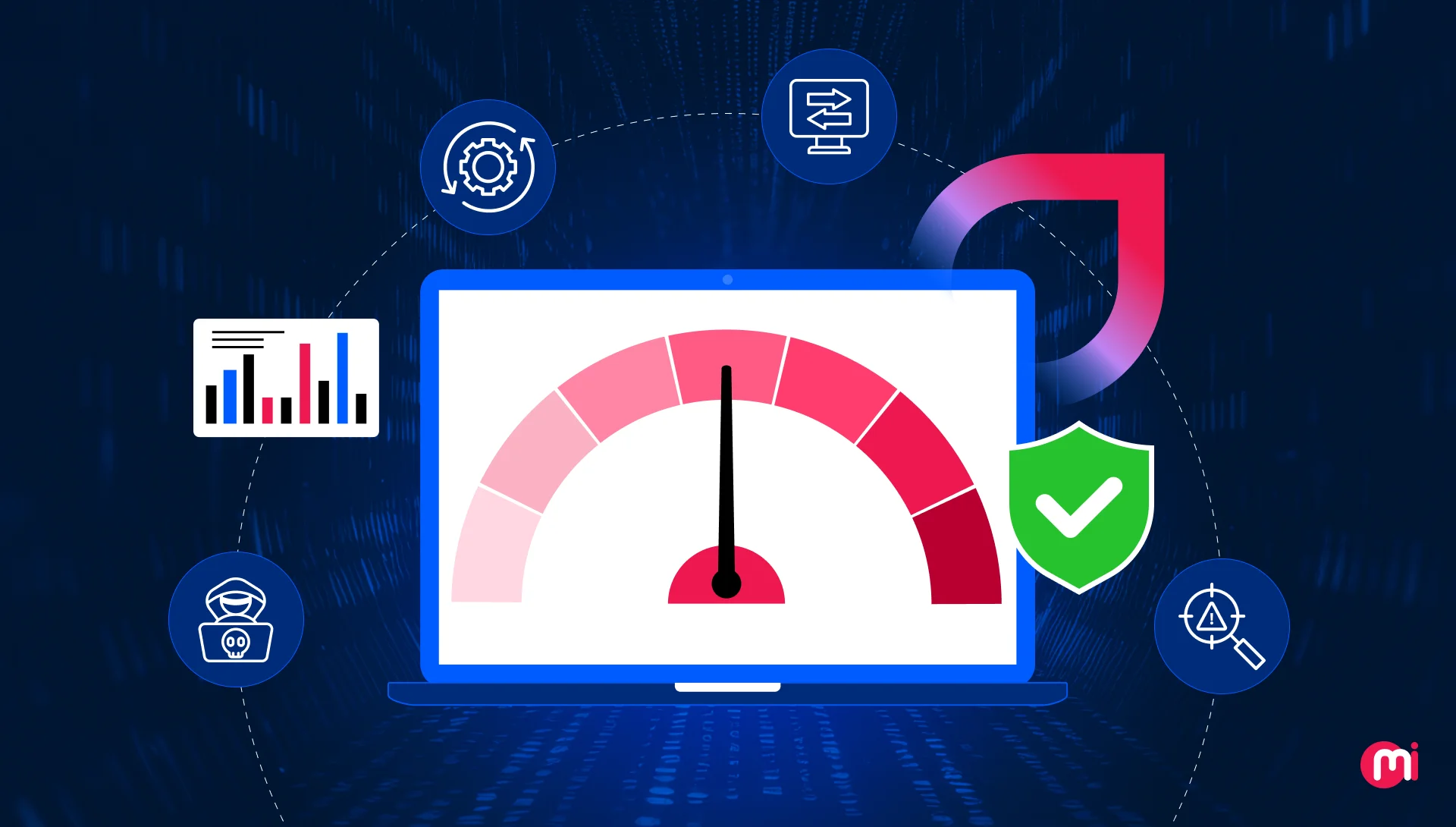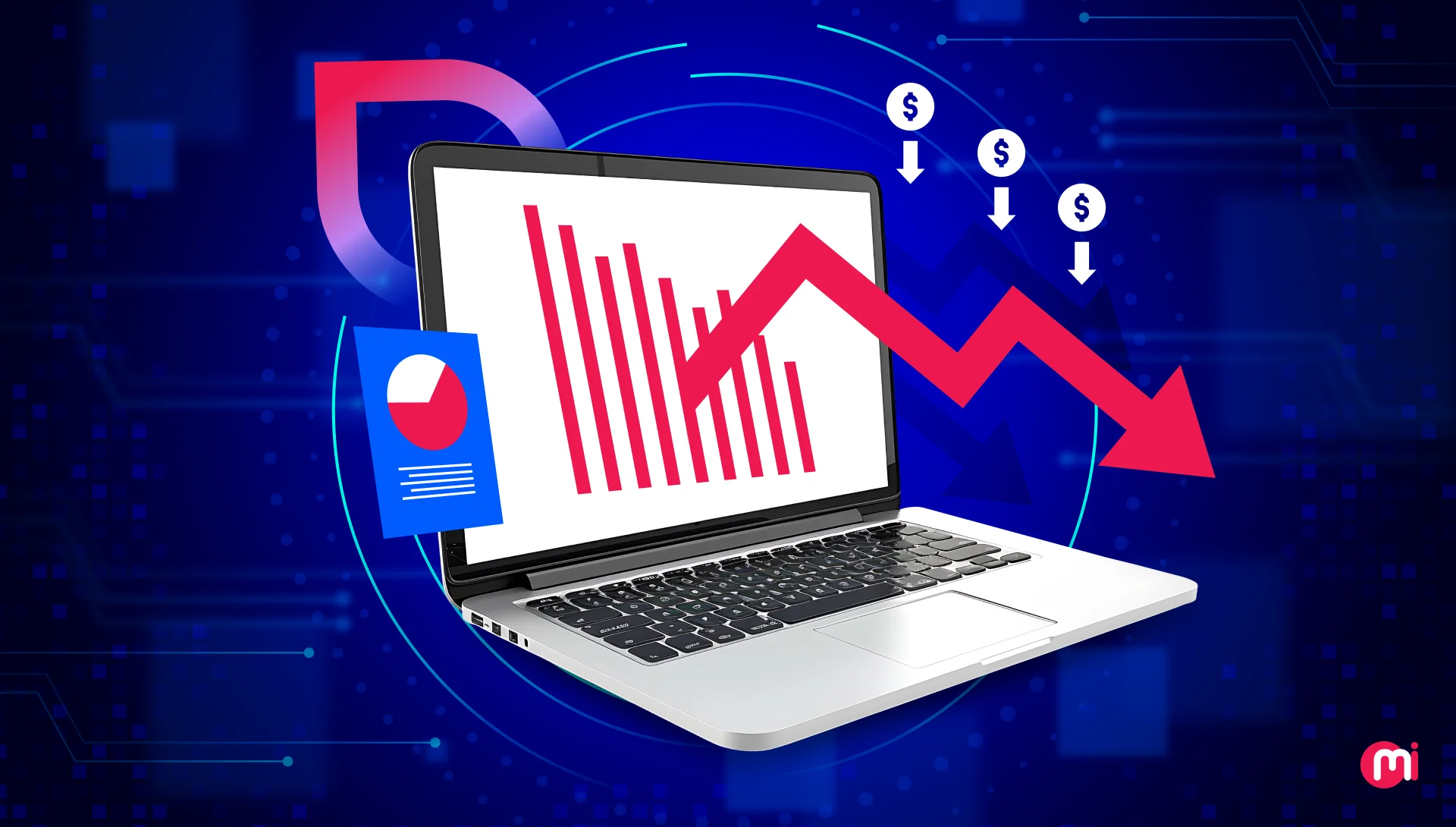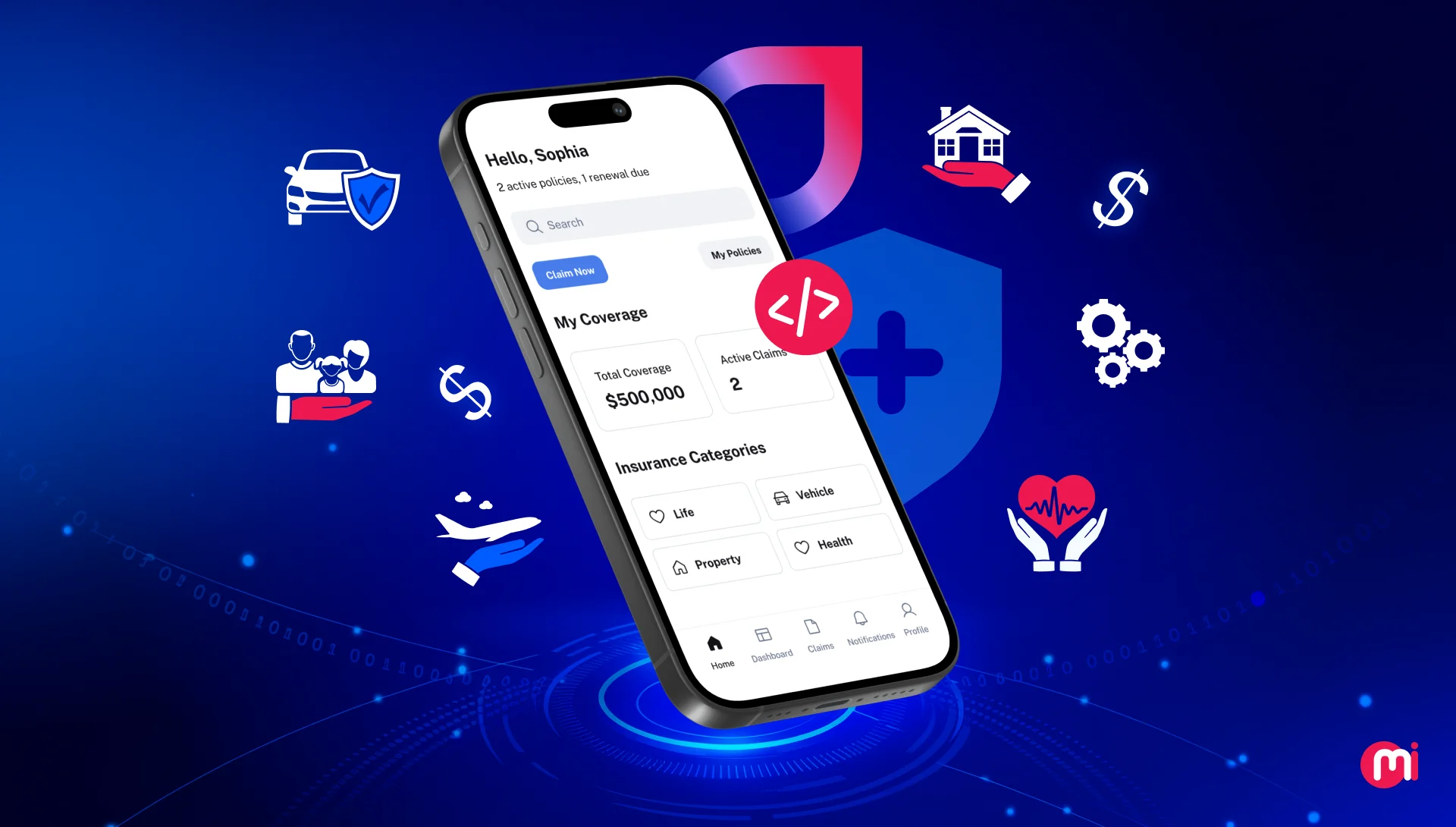What Is Technology Risk and How to Manage It? Frameworks, Challenges, and Best Practices
- Business
- October 23, 2025
Technological advancements enable businesses to stay competitive, improve efficiency, enhance customer experience, and reduce costs associated with manual, paper-based workflows. But with these benefits, digital transformation of businesses also leads to risks, like cybersecurity, technical debt, cultural resistance, and a lot more. For effective technology risk management, a strategic approach is required!
Business IT risks are not theoretical; more than 90% of businesses face technology-related risks from moderate to high-level, reveals a Hogan Lovells report. This report also adds that 91% of businesses are already exposed to moderate or high levels of IT risks. From which, two-thirds (~66.66%) of business leaders said that their organization could be taking more proactive approaches to managing these risks.
Your business could be one of those two-thirds facing technological risks! Therefore, we created this blog to help you with technology risk management, from assessment to tackling challenges to strategies.
Key Takeaways
- Technology risk management is a strategic function that protects business continuity, ensures compliance, and maintains a positive reputation.
- Common technology risks include cybersecurity threats, legacy system vulnerabilities, data integrity issues, and third-party dependencies.
- To address these risks effectively, a structured technology risk management process includes identifying, analyzing, prioritizing, mitigating, and monitoring.
- AI-driven analytics and cloud-native architectures enable the proactive detection and management of risks, ensuring agility and resilience.
- To stay future-ready, organizations must treat technology resilience as a continuous process, not a one-time initiative.
- Partnering with trusted IT and security experts can accelerate your organization’s ability to manage risk and adapt to emerging technologies.
What Is Technology Risk Management?
Technology risk management is the process of monitoring, assessing, identifying, and mitigating risks that arise from an organization’s use of technology.
Key technology risk management involves identifying vulnerabilities, evaluating potential impact, implementing controls, and continuously monitoring and improving as technologies and threats evolve.
In short, it’s about ensuring that business technology supports your business goals securely and sustainably, rather than becoming a source of disruption or loss.
Why Technology Risk Management Matters Today
Technology risk management today has become more than a necessity with the expansion and rapid advancements in AI, cloud, and connectivity. With this technological evolution, it is not only multiplying opportunities for businesses but also risks associated with it.
Here’s why technology risk management has become mission-critical:
- With AI and automation helping companies reduce effort and cost associated with repetitive tasks, even a small algorithmic glitch can lead to major financial or reputational damage without proper oversight.
- Generative AI is speeding up creative and augmenting processes for businesses, but it’s also being leveraged by cyber attackers, often in combination with deepfake technologies, to breach systems and manipulate data.
- In cloud, SaaS, and API-driven ecosystems, a single vendor outage or vulnerability can ripple across your entire operation. Managing these external risks is now as critical as addressing internal ones.
- Growing technology-related risks have made regulatory frameworks like GDPR, the EU AI Act, and various cybersecurity mandates more stringent, holding organizations accountable for data protection and ethical technology use.
- While legacy systems may feel convenient due to familiarity, continuing to run them without updates or modernization increases the likelihood of breaches, downtime, and integration failures.
Also Read: Cloud Security Best Practices
Key Types of Technological Risks Businesses Face
Typically, businesses can face technological risks related to governance, operations, cybersecurity, compliance, third parties, data integrity, and more.
Let’s know more about the technology risks businesses commonly face:
- Strategic and governance risks arise when technology decisions are misaligned with business objectives, or when poor IT governance, unclear policies, or a lack of oversight lead to wasted investments, missed opportunities, and regulatory exposure.
- Operational risks occur due to system failures, process inefficiencies, or human error, which can result in outages, downtime, and operational bottlenecks.
- Cybersecurity risks include threats such as ransomware, phishing attacks, and data breaches that compromise sensitive information, damage reputation, and incur financial losses.
- Compliance risks emerge when organizations fail to meet standards like GDPR, HIPAA, or other regulations, potentially resulting in fines, legal liabilities, and reputational damage.
- Third-party risks arise from outages, security lapses, or vulnerabilities introduced by vendors, SaaS platforms, or API integrations, which can disrupt operations and create cascading failures.
- Emerging technology risks are associated with adopting new technologies such as AI, IoT, or blockchain, which carry unknown vulnerabilities, immature standards, and the potential for rapid obsolescence.
- Data integrity risks stem from inaccurate, incomplete, corrupted, or inconsistent data, undermining decision-making, compliance, and operational effectiveness.

Challenges in Managing Technology Risks
When thinking of opting for technology risk management, you can expect to face common challenges, like a lack of unified visibility, legacy system vulnerabilities, misaligned IT and business priorities, and talent and resource gaps.
Surprisingly, these challenges may arise even after you have access to the right tools and frameworks.
Let’s have a look at key challenges that can hinder effective technology risk mitigation:
1. Lack of unified visibility
To be competitive in the market, businesses adopt the technology but miss establishing a holistic view of their technology landscape. This leads to disconnected systems, siloed data, and multiple vendor platforms, making it difficult to identify risks proactively and leaving blind spots that can escalate into major incidents.
2. Legacy system vulnerabilities
Older/Legacy systems often remain critical to operations but are harder to secure and maintain. These are unsupported software with outdated protocols and incompatible integrations that increase the likelihood of breaches, downtime, and compliance violations.
3. Misaligned IT and business priorities
When technology initiatives aren’t closely tied to business objectives, risk management becomes reactive rather than strategic. This misalignment can result in missed opportunities, inefficient resource allocation, and vulnerabilities that go unaddressed.
4. Talent or resource gaps
Business technology risk management requires specialized skills in cybersecurity, compliance, cloud engineering, and emerging technologies. If your organization doesn’t have such skills in place, then it can become a challenge.
How to Manage Technology Risk?
The process to manage technology risks includes identifying and mapping digital assets, analyzing vulnerabilities and dependencies, prioritizing risks, defining risk appetite and governance, deploying safeguards, integrating automated monitoring and analytics, and reviewing and iterating safeguards continuously.
Here’s a step-by-step framework for building a resilient, risk-aware organization:
STEP 1: Identify and map digital assets
Start by cataloging all technology assets used within your business premises, such as hardware, software, data repositories, and third-party integrations. This mapping will allow you to understand the technologies you have in place, where they reside, and for what purpose you’re using them. It is essential for spotting potential vulnerabilities.
STEP 2: Analyze vulnerabilities and dependencies
Conduct technology risk assessments through vulnerability scans and penetration tests to identify weaknesses and dependencies of your business IT landscape.
Not just that, this assessment also allows you to map system interconnections, dependencies, and exposure points to understand how risks might spread in your digital ecosystem.
STEP 3: Quantify and prioritize risks
Not all risks are created equal or have the same impact on the business IT system. So, you’ll have to evaluate each identified risk based on potential impact and likelihood. Structured technology risk assessment tools can help you in that by assigning impact scores for confidentiality, integrity, availability, and reputation. Based on that, you can prioritize risks to mitigate.
STEP 4: Define risk appetite and governance
Set clear boundaries for acceptable risk levels (risk appetite) based on business goals and regulatory requirements. Establish governance, assign responsibilities, and create reporting structures and accountability across leadership, IT, and compliance teams. This way, you can integrate technology risk management across business IT functions.
STEP 5: Implement mitigation and controls
Implement necessary safeguards such as access management, encryption, patching, and network segmentation to reduce risk exposure within your IT infrastructure. Address technical debt and vulnerabilities in legacy systems, and ensure that these controls remain effective against emerging threats.
STEP 6: Deploy automated monitoring and analytics
Use technology to stay ahead of emerging threats. For this, you can use automated monitoring, data analytics, and real-time alerts to continuously monitor risks and detect anomalies early and address them before they escalate into incidents.
STEP 7: Review and iterate continuously
Technology and risk landscapes evolve constantly. So, you have to conduct regular reviews, update risk assessments, and refine controls to ensure your risk management practices remain effective and aligned with business objectives.
Also Read: What is Technical Debt?
Proven Strategies to Manage and Mitigate Tech Risks
Proven strategies to manage and mitigate tech risks include implementing continuous risk assessment, integrating automation and monitoring tools, building a governance- and compliance-first culture, modernizing legacy systems, and partnering with trusted IT and security experts.
Here are the approaches that make a measurable difference:
Implement continuous risk assessment
Leverage automated, AI-enhanced tools to regularly reassess the threat landscape. This approach helps to identify new and emerging risks before they get out of your hands.
It not only helps to get real-time awareness about risks but also prioritizes them, considering the potential impact they can have in the business IT landscape.
Leverage our cloud security services to assess risks associated with cloud configurations!
Integrate automation and monitoring tools
When you enable automation of technology risk assessment and monitoring, you get real-time visibility into system health, security events, and operational anomalies. This integration of automation and monitoring tools helps to accelerate detection and response to risks.
Further, the use of data analytics helps to flag unusual activity, predict potential failures, and support data-driven decision-making.
Build a governance and compliance-first culture
Beyond a technical exercise, a risk mitigation strategy describes an organizational mindset. For this, you have to develop clear policies, assign risk ownership, and establish accountability across roles.
After that, you should focus on regular training and compliance audits to keep teams alert and ensure adherence to evolving regulations, including those related to data privacy and AI ethics.
Embedding this into everyday practice ensures that policies are followed, accountability is clear, and regulatory obligations are met consistently.
Modernize legacy systems to reduce exposure
Outdated technology increases vulnerability to breaches, downtime, and integration failures. Hence, you need to map where your legacy system is lagging in performance.
You can modernize your legacy enterprise application by moving to cloud-native, zero-trust systems and patching technical debt that could weaken controls or introduce vulnerabilities. As a result, it reduces exposure, improves efficiency, and supports scalable, secure operations.
Partner with trusted IT and security experts
Managing technology risks in-house is possible, but it often requires significant investment and dedicated focus from specialized teams. That can pull attention away from your core business priorities.
Partnering with experienced IT and software consulting services providers gives you access to niche expertise, advanced tools, and proven frameworks without stretching internal resources.
When selecting third-party partners, you should evaluate their security posture, compliance & certifications, and audit history. These benchmarks help ensure they can uphold the same level of trust, governance, and resilience you aim to build internally.
What are the Four Approaches for IT Risk Management?
When it comes to technology risk management, there’s no one-size-fits-all playbook. However, there are four approaches: risk avoidance, risk reduction, risk transference, and risk retention, which IT leaders mix and match depending on business priorities, risk appetite, and compliance mandates.
Let’s break them down:
1. Risk avoidance
This approach focuses on eliminating the root cause before it turns into a threat by changing, discontinuing, or not undertaking certain activities. It mainly targets the ones that expose the organization to unacceptable risks.
For instance, an enterprise may decide not to adopt a certain third-party SaaS tool due to weak data encryption policies. This is typically the most expensive option and is reserved for high-impact, high-likelihood risks.
2. Risk reduction (mitigation)
Risk reduction, or mitigation, is the most common and often most effective strategy for managing risks that cannot be completely avoided. Here, the goal isn’t to eliminate risk but to minimize the likelihood or impact of a risk event. It does that by implementing controls and measures.
For instance, to reduce the risk of a ransomware attack, an IT leader could ensure all employee devices have up-to-date antivirus software, segment the network to contain a breach, and conduct regular security training on how to spot phishing emails.
3. Risk transference
Sometimes it’s smarter to share the burden. Risk transference involves shifting the potential consequences of a risk to a third party. This strategy is used when a risk is unavoidable but can be managed more efficiently by another entity.
For instance, a company might purchase cyber insurance to protect against the financial losses that could result from a data breach. Similarly, when outsourcing software development services, a leader can negotiate a contract that makes the vendor liable for certain security incidents.
4. Risk retention (acceptance)
Not every risk warrants action. Some risks (low-impact) fall within acceptable tolerance levels and can be retained and monitored but not mitigated. In this, IT leaders carefully document accepted risks based on cost-benefit analysis (potential risk vs. the cost of addressing it) and continue to monitor them.
For instance, a leader may choose to accept a low-impact bug in a non-critical internal application if the cost of fixing it outweighs the potential harm. The decision is documented in a risk register with a plan for continued monitoring.
Top 5 Technology Risk Frameworks to Meet
When you’re thinking of managing technology risk, you should select the right risk management framework that’ll enhance your efforts in it, from the NIST Cybersecurity Framework (CSF), ISO/IEC 27001, COBIT, FAIR, or OCTAVE.
Let’s know the five leading technology risk management frameworks:
ISO 27001
A gold standard for information security management. ISO 27001 helps businesses build a robust Information Security Management System (ISMS), ensuring continuous monitoring, control, and improvement of security practices across data, people, and processes.
It does that by following key principles known as the “CIA triad” – Confidentiality, Integrity, and Availability.
ISO 27001 is best for organizations, especially those in finance and healthcare, that need to demonstrate their commitment to stringent security standards and want a competitive advantage through global certification.
NIST Cybersecurity Framework
Developed by the U.S. National Institute of Standards and Technology (NIST), this framework is widely recognized for helping organizations manage cybersecurity risks with flexibility and practicality.
Industries across sectors adopt it for its practical and adaptable approach. Its key functions include identifying, protecting, detecting, responding, and recovering.
Hence, it’s best for a wide range of organizations, particularly those working with U.S. federal agencies, who want a scalable and adaptable framework to enhance their overall cybersecurity posture.
Control Objectives for Information and Related Technologies (COBIT)
Managed by the Information Systems Audit and Control Association (ISACA), this framework bridges IT processes with enterprise goals. It focuses on the governance and management of enterprise IT. It’s ideal for aligning risk, performance, and compliance, ensuring IT supports business outcomes effectively.
COBIT is best for large enterprises and regulated industries seeking to bridge the communication gap between IT teams and executive leadership by framing IT risks in terms of business impact.
Factor Analysis of Information Risk (FAIR)
FAIR stands out for its quantitative approach. It helps organizations measure information risk in financial terms, rather than relying on subjective qualitative ratings. It also allows executives to understand potential business impact in monetary value and make smarter investment decisions.
Key components of FAIR include quantifiable variables like Loss Event Frequency (LEF) and Probable Loss Magnitude (PLM).
Organizations in financial services and with critical infrastructure can make the most of this FAIR framework, as they need to prioritize cybersecurity investments based on potential monetary impact and communicate risk to business teams.
OCTAVE (Operationally Critical Threat, Asset, and Vulnerability Evaluation)
Developed by Carnegie Mellon University, OCTAVE emphasizes a self-directed approach. A business-driven framework that helps organizations manage information security risks by focusing on their critical assets and operational risks. It helps them to evaluate their critical assets, identify potential threats, and prioritize remediation efforts based on business impact rather than technical severity alone.
It uses a three-phase process to identify assets, assess vulnerabilities, and develop a customized risk management strategy. Hence, it is best for businesses of various sizes with complex IT environments that need an in-depth, customizable, and asset-centric approach to risk assessment.
Tech Trends Helping Businesses to Future-Proof IT Infrastructure Against Technology Risks
Technology trends that help future-proof IT infrastructure include AI-powered risk intelligence, zero-trust security frameworks, cloud-native and multi-cloud adoption, automation and IaC, cyber resilience strategy, and continuous compliance and governance tools.
These advancements help businesses build resilient, scalable, and secure systems that can withstand disruptive events, mitigate risk, and support long-term growth.
So, let’s know how they help businesses future-proof their IT infrastructure against emerging technology risks:
- AI-powered risk intelligence uses machine learning and predictive analytics to detect anomalies, identify potential threats, and prioritize remediation before incidents escalate.
- Zero-trust security frameworks enforce strict identity verification for every user, device, and application. This ensures that access is continuously validated rather than assumed trusted.
- Cloud-native and multi-cloud adoption employs containerized, microservices-based architectures across multiple cloud providers to enhance scalability, fault tolerance, and rapid recovery from outage.
- Automation and Infrastructure as Code (Iac) employ the deployment and configuration of IT environments through version-controlled scripts, reducing human error and ensuring consistent security and compliance.
- Cyber resilience strategy includes the use of Backup-as-a-Service (BaaS) and Disaster Recovery-as-a-Service (DRaaS) solutions that allow businesses to restore systems and data rapidly, minimizing business disruption and financial impact.
- Continuous compliance and governance tools use integrated GRC platforms to monitor regulatory compliance in real-time, enforce policies automatically, and generate actionable insights for risk management.
How MindInventory Helps Businesses Build Tech Resilience
In today’s fast-evolving digital landscape, technology risks are inevitable, but business disruption doesn’t have to be. Building tech resilience isn’t just about patching vulnerabilities; it’s about creating an IT ecosystem that anticipates threats, adapts to change, and drives long-term growth.
It requires expertise, strategic insight, and a proactive approach. That’s where MindInventory comes in as a strategic technology partner, offering solutions that include comprehensive risk assessment, tailored mitigation and analytics, software modernization and cloud transformation, compliance assurance, and expert guidance.
By combining deep technical expertise with forward-looking strategies, MindInventory ensures your IT infrastructure is not only secure but also resilient, scalable, and future-ready.

FAQs About Technology Risk Management
IT risk management helps organizations protect critical data, ensure business continuity, and maintain customer trust. It minimizes financial losses, operational disruptions, and compliance violations caused by technology failures or cyber threats.
The main technology risks in digital transformation include cybersecurity threats, data privacy breaches, complex system integration issues, potential for data loss or corruption, and the risks associated with new technologies like AI.
Businesses can manage IT risks proactively by implementing continuous risk assessments, adopting Zero Trust security, modernizing legacy systems, automating monitoring, and aligning IT governance with business goals. Regular audits and training also strengthen resilience.
Technology risk management is supported by various tools, including GRC platforms, like ServiceNow and MetricStream, cybersecurity solutions like CrowdStrike and Palo Alto Networks, and cloud monitoring tools like AWS CloudTrail. Moreover, AI-driven analytics tools further enhance predictive risk detection and response.













